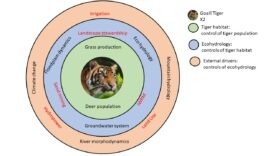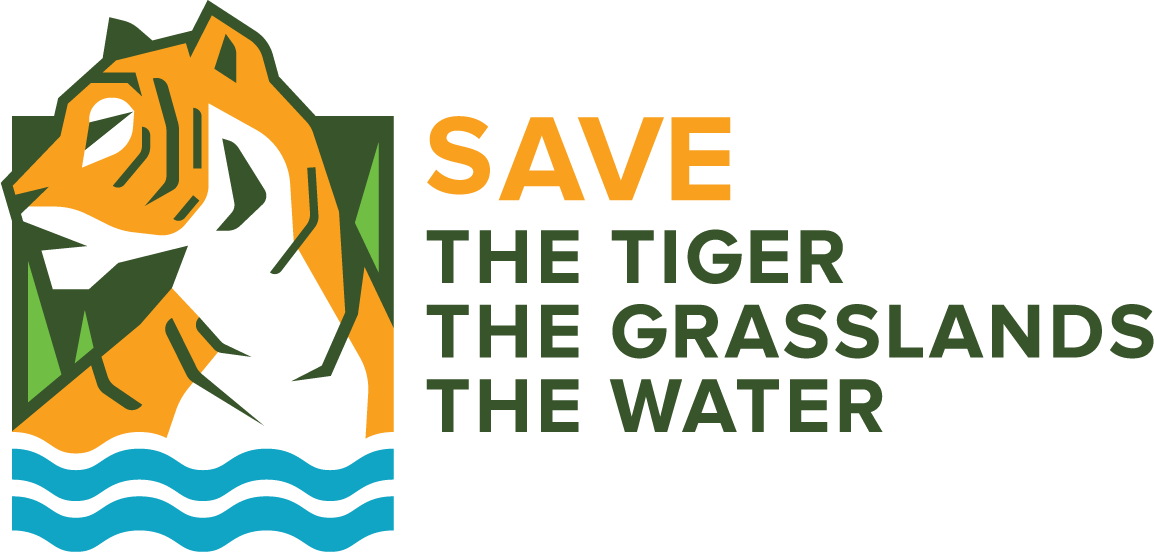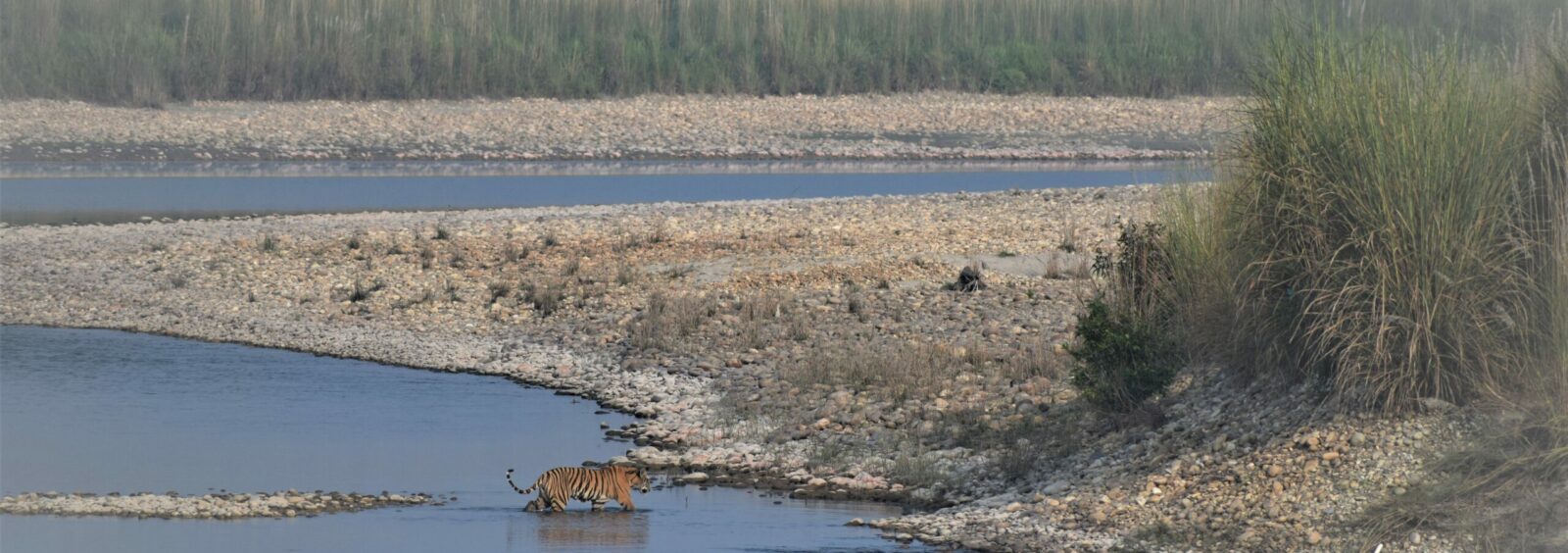Our Work
There are less than 4000 wild tigers alive and their habitats are under pressure due to climate change and anthropogenic activities. The Terai Arc Landscape (TAL) and the Duars at the foot of the Nepalese, Indian and Bhutanese Himalayas are the most important conservation area of tigers. Here, tiger habitats are affected through changing hydrological conditions that lead to deteriorating grasslands upon which free roaming deer rely for grazing. However, the natural and anthropogenic influences on grassland dynamics in these landscapes are poorly understood. Therefore, the overarching objective of this project is to characterise the temporal dynamics of the grasslands in the 23 nature reserves present. Particularly, the hydrology and river morphodynamics as abiotic factors become addressed as well as the pressures behind these two. This is not only a scientific, ecohydrological novelty but also crucial in combining preservation of the tiger habitat with sustainable water resources management in the TAL, the Duars and upstream Himalayas.

We study the historical grassland dynamics in the floodplain over centuries and quantify the influence of climate change and contemporary anthropogenic interventions in the water system. We also assess the interrelationships between river dynamics, groundwater, landcover and land-use, and grazing ungulates. We take a dual approach: fundamental, multi-disciplinary research will be performed at Bardia National Park and the associated Karnali River in Western Nepal as ideal study area; applied research will identify similarities and essential differences in the current hydrological and ecological conditions of the grasslands in the 23 nature reserves. Landscape stewardship approaches and strategies for sustainable water resources management and tiger habitat conservation are developed in co-creation with local communities and authorities. Concurrently, public awareness is raised at local to global scale to stimulate conservation of the tiger habitat and educational material is established for students, park rangers and others.

